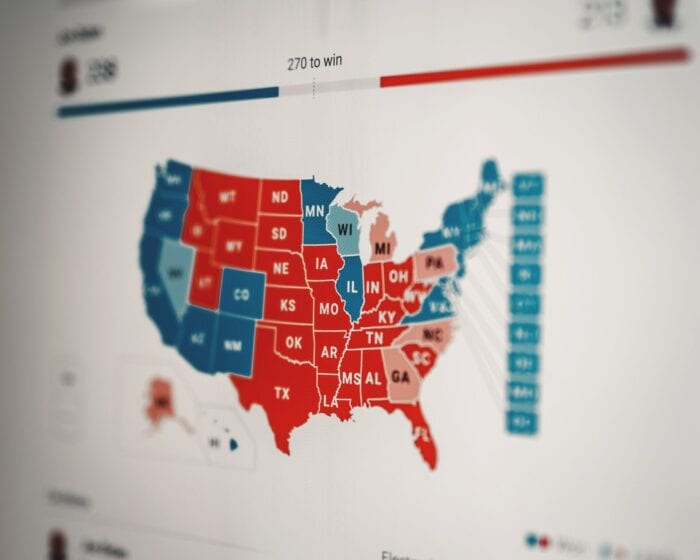One Nation, Uniform in Voter’s Rights; Who Benefits
Published on
Universal Design in Voter’s Rights and Reform
The world watched and tried to understand the complexity of the 2020 United States of America election process. This past election caused many Americans and national leaders to consider the need for more uniform federal election standards. Certainly, a proper universal design approach to voter’s rights reform can ensure all peoples’ votes are accurate and legal.
Before we dive in too deep, it is crucial to understand that states and municipalities govern based on their state constitution. States have this autonomy, according to the Tenth Amendment of the US Constitution. Therefore, since national election standards are created by the federal government, they must be careful not to overreach or limit states’ rights.
Universal design is a concept that includes the needs of all people from the very start. In other words, the disabled community needs to have representation and provide input on federal voting reform.
What are Voting Standards and Why Are They Important?
Voting standards determine how votes are cast and counted. So, states and municipalities still have autonomy beyond the minimum requirement. A minimum voting standard is essential to protect voter’s rights and the integrity of the voting process. Five current standards protect people with disabilities and minorities to ensure equality in voting. These standards do not interfere with a State’s autonomy.
Five Federal Laws that Improve Voter Rights Universally
Over the years, the United States has adopted five federal laws aimed to improve the voting standard for people with disabilities. And, while there is room for improvement, these laws have allowed millions of Americans the opportunity to vote in our country’s elections.
VRA
The Voting Rights Act (VRA) of 1965 enables voter’s the right to receive assistance to vote. The VRA permits voters who are blind, or need aid, to have a person of their choosing with them when they vote. The accompanying individual must be, “…other than the voter’s employer or agent of the employer or officer or agent of the voter’s union.”
VAEHA
The Voting Accessibility for the Elderly and Handicapped Act of 1984 (VAEHA) requires polling places in federal elections to provide accessible access to a polling place. If an accessible polling place is not available, states must provide an alternative voting method on election day.
NVRA
The National Voter Registration Act of 1993 (NVRA) focuses on helping people with disabilities register to vote in elections. The NVRA requires voter registration to be available by state-funded programs or public-assistance programs that mainly serve the disabled community.
HAVA
The Help America Vote Act of 2002 (HAVA) requires that all polling stations have one accessible voting system at each location during federal voting. The accessible voting station must provide the same access, privacy, and independence afforded to all people.
ADA
The 1990 Americans with Disabilities Act (ADA) is an umbrella law that requires equal access to voting without barriers. These barriers could be communication or physical. So, a person who is blind must have access to vote independently in the same manner as other people—voting by mail, voting in person, or early voting.
The ADA also requires all materials leading up to the election to be accessible. The Effective Communication Guide outlines braille, audio, and large print, as a few reasonable accommodations.
In each of the five Federal Acts, there was a clear need for creating the standards to protect the millions of Americans with disabilities. In many cases, it focused on the more than 12 million people with visual disabilities. These laws helped more than 16 million Americans vote in the 2016 elections.

How Can States and Municipalities Have Different Guidelines?
As mentioned earlier, the constitution of each state describes the voting process and oversight. The U.S. Vote Foundation outlines the different ways to vote and register to vote. For example, Connecticut requires a valid reason for absentee voting but will let you register to vote on election day. In contrast, Florida permits absentee and mail-in voting but requires registration 29 days before an election.
States like Michigan and Georgia have divided duties and authority over elections with a combination of elected officials and appointed board members.
Whereas states like Pennsylvania, Texas, and Virginia have a governor appointed single overseer of the election process.
It’s like “Who’s On First?” with election administration from state to state.
Take into account the many differences in state laws, timelines, poll workers’ training, and oversight. It’s no wonder many people are confused by the election process.
Moving Forward; Americans with Disabilities
In a perfect world, accessibility would be readily available for all people. Both physical and communication barriers would not exist. And, people with disabilities would have a seat at every table. However, this often isn’t the case.
States and Boards of Elections across the United States face lawsuits from visually impaired and blind voters. Suits (2020) are in North Carolina, Texas, New Hampshire, Michigan, Maine, Maryland, Pennsylvania, New York, Florida, and Virginia. With numerous civil complaints issued as well.
When it comes to voter’s rights, states need to adhere to Federal Laws.
What can you do to get involved?
The American voting process only works because of volunteers. Organizations volunteer their buildings as a polling location, people volunteer to work the poll, and others volunteer to sit on the other end of the phone line if people with disabilities experience inequality, unfair treatment, or need to verify information. If you would like to become an advocate or be better informed about making voting accessible, contact one of the following organizations.
- American Association of People with Disabilities
- National Disability Rights Network
- American Council of the Blind
- American Federation for the Blind
One by one, it can be a universal design.
Categorized in: Uncategorized
This post was written by



Comments are closed here.